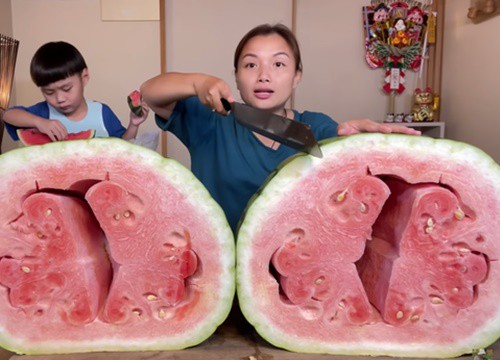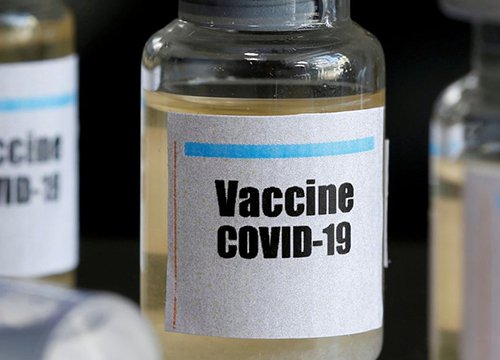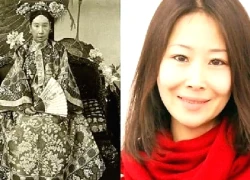The girl was teased and assaulted by 3 drunken youths until her eardrum was punctured, making netizens angry

2 | 0 Discuss | Share
Young people today often joke about how laughing too much can lead to suffocation, but few people know that since ancient times, this has been a disease that makes many people 'creepy' when they learn about it.
According to recorded data, the highlands of Papua New Guinea are almost uninhabited. It was not until 1930, when Australian gold miners arrived, that they discovered that there were up to a million people living, almost all a combination of different tribes.
About 20 years later, researchers decided to come to this place to learn about the life and culture of indigenous people. However, here they encountered a very strange disease that they had never seen before in the Fore tribe with a population of 11,000 people. This disease took 200 lives every year in this place, but up to that time no one could find the cause behind the disease.
The disease has very clear signs. First, the patient's body becomes weak for a short time, his whole body trembles and he cannot stand up. Gradually, every food eaten makes the patient nauseous. They will become irritable, often grind their teeth and mutter to themselves. And the most terrible thing is that the person with the disease will continue to laugh uncontrollably until exhausted.
Suffering from a disease but having no cure and not being able to name the disease, many people are at the "end of their wits" to the point of attacking and biting their caregivers. Even feeling uncomfortable with the sounds or voices of loved ones. In the final stage, the unfortunate victims will lie unconscious and stop breathing a few hours later.
Around the 1950s, the disease only appeared a few times in a few unfortunate people. Yet after only 3 years, this disease has broken out on a large scale, with a very high infection rate, infecting 1,000 people. They all laughed like crazy and then died mysteriously. Strangely, the disease mainly appears in women and children, and is rarely seen in adult men.
The scientists who came here, after learning about this, worked hard day and night to research in the hope of finding the key to liberating human lives. However, despite their best efforts, trying to research and analyze every sample on the island, they were still unable to detect pathogens in the patient's body, food, water or air... Efforts to decode the mystery of this disease gradually hit a dead end and became a big question mark.
Everything gradually became clear until the mid-1960s, when Australian doctor Michael Alpers began to research and find the answer. He began collecting and performing autopsies, then took brain tissue from an 11-year-old girl who passed away from this strange disease.
Next, Michael injected that brain sample into the bodies of two different chimpanzees. In just 2 years, these chimpanzees gradually went crazy and lost control, eventually dying just like sick humans. This helped him conclude that the pathogen was stored in the victim's brain.
However, medicine at that time was not capable of identifying the "culprit" causing the disease. Later, when modern microscopes were developed, scientists found that the main cause was prions - a microbial structure up to 100 times smaller than a virus. Even more terrifying, they have the ability to resist the effects of the environment and replicate very quickly, causing the patient to slowly die in laughter.
After discovering the pathogen, experts began to discover how the disease was transmitted from person to person. What even the researchers have to 'chill' is that the root cause of this disease comes from a terrifying custom, which is... cannibalism of the tribe's deceased. Fore.
Specifically, at the Fore clan's funeral, they will bring out the body of the deceased for those who visit to "enjoy". Men with major positions in the tribe will come together to eat the legs, arms, torso and internal organs of the deceased. Only women and children are allowed to eat the head - especially the brain, which is why the risk of this disease is much higher for women and children.
This custom comes from the Fore tribe's belief that it will help them absorb the vitality and luck of the deceased. That's why this has lasted for hundreds of years and given rise to a strange and horrifying disease. After all, world medicine has given a name to this disease of laughing until one stops breathing - it is Kuru disease.
Over the next two years, Alpers and Lindenbaum discovered that kinship among the Fore people was not based purely on biological connection, but was a complex system of social bonds and attachments. with surrounding individuals. They found that Kuru is spread primarily through kinship but not exclusively between biologically related individuals, making it unlikely that the disease is transmitted genetically. Epidemiological data exclude the possibility of transmission through air, insects or contaminated water.
As mentioned, patients with Kuru will often have difficulty moving, difficulty swallowing, slurred speech, mood changes, muscle twitching, inability to hold objects... especially uncontrollable laughing or crying. The disease will occur in 3 main stages as follows:
- Stage 1: headache and joint pain, quite similar to normal fatigue, so patients often ignore it.
- Stage 2: the patient cannot walk, the body trembles and convulses involuntarily, just like neurological diseases.
- Stage 3: the patient will be bedridden and gradually lose the ability to speak. They were also susceptible to dementia and malnutrition, eventually dying about a year later from pneumonia.
Children and women of the Fore tribe, due to eating dead people's brains, are the main subjects of Kuru disease.
In fact, no one born after 1960 has ever had the disease, thus confirming that the connection between Kuru and cannibalism has disappeared.
Fortunately, there is reason to believe that after more than 100 years, the Kuru epidemic may finally be over. The last person died of Kuru in 2009, and there have been no new cases since 2010. Even more encouraging, it appears that the Fore people have actually developed immunity to Kuru disease, protecting them from other diseases. future outbreaks.
How did Le Tu and Luu Gia Linh survive the epidemic?  Yang Mi19:27:47 20/04/2022Trinh Hy Di, Le Tu and some TVB stars shared when they were unlucky to be stuck in Shanghai because of the epidemic while on a business trip. The latest wave of the Covid-19 pandemic in Shanghai has resulted in a major impact on the city. Under the zero-Covid policy, a strict...
Yang Mi19:27:47 20/04/2022Trinh Hy Di, Le Tu and some TVB stars shared when they were unlucky to be stuck in Shanghai because of the epidemic while on a business trip. The latest wave of the Covid-19 pandemic in Shanghai has resulted in a major impact on the city. Under the zero-Covid policy, a strict...

2 | 0 Discuss | Share

4 | 0 Discuss | Share

3 | 0 Discuss | Share

4 | 0 Discuss | Share






1 | 1 Discuss | Report